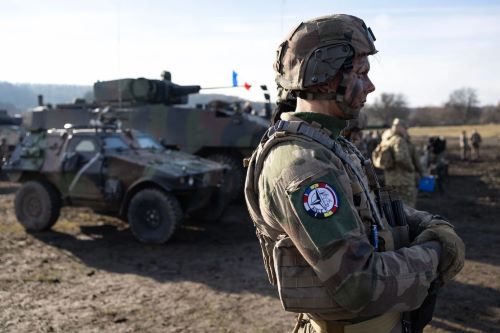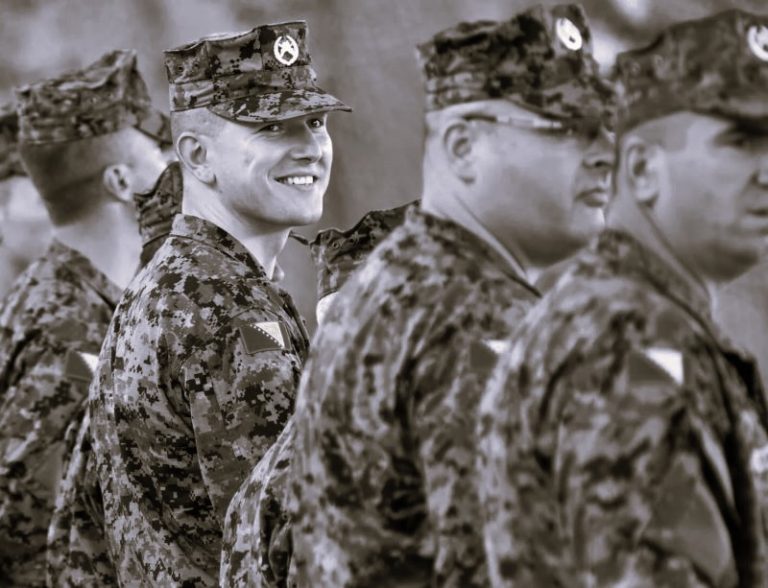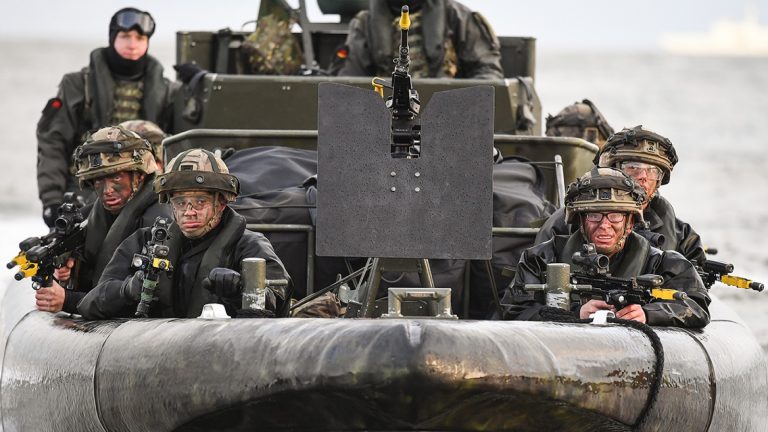

Some allies fear that NATO’s efforts to deter Russia in the long run fall short.

By Robbie Gramer
Diplomacy and National Security Reporter
Foreign Policy

By Jack Detsch
Pentagon and National Security Reporter
Foreign Policy
NATO is steadily bulking up its military footprint along its eastern flank in a show of force to Russia, but behind the scenes Eastern European allies fear that most of their Western European counterparts are still too slow to respond to the threat from Russia.
Eastern European countries are pushing to expand the size and scope of eight units of NATO military forces stationed along the alliance’s eastern flank and advocating for larger NATO allies to preposition more military equipment farther east to ensure all the forces stationed there are well supplied and ready to fight at short notice. Some allies, such as Poland, are also pushing the United States to expand its intelligence and command-and-control capabilities along NATO’s eastern flank. More policy proposals are expected to come up during NATO’s next major summit, scheduled for July in Vilnius, Lithuania.
“We’re as a region investing in our own defense as we deliver all we can to Ukraine and setting up ways to host more allied troops here as soon as they are ready,” said one Eastern European official, speaking on condition of anonymity. “We’re waiting with arms wide open and just hoping we don’t have to wait too long.”
Most allied defense officials agree that Russia, bogged down in Ukraine and hemorrhaging manpower and equipment at alarming rates, doesn’t pose an imminent threat of invasion to NATO territory. But some Eastern European allies fear that NATO forces deployed near Russia’s borders aren’t being expanded quickly enough or backed by adequate defense spending commitments from their allies farther west.
The internal debates within NATO reflect a growing belief that Russia will find a way to reconstitute its military power over the medium term, despite its stinging battlefield setbacks and high casualty rates in Ukraine. The debates also coincide with the leaking online of a massive tranche of classified U.S. documents that paint a dour picture of Ukraine’s prospects in the war against Russia, including ammunition shortfalls and predictions of bloody stalemate in the coming spring campaign. As many as 354,000 Ukrainian and Russian soldiers have been killed or wounded in the war, according to the trove of purportedly classified documents.
READ ENTIRE ARTICLE AT FOREIGN POLICY


